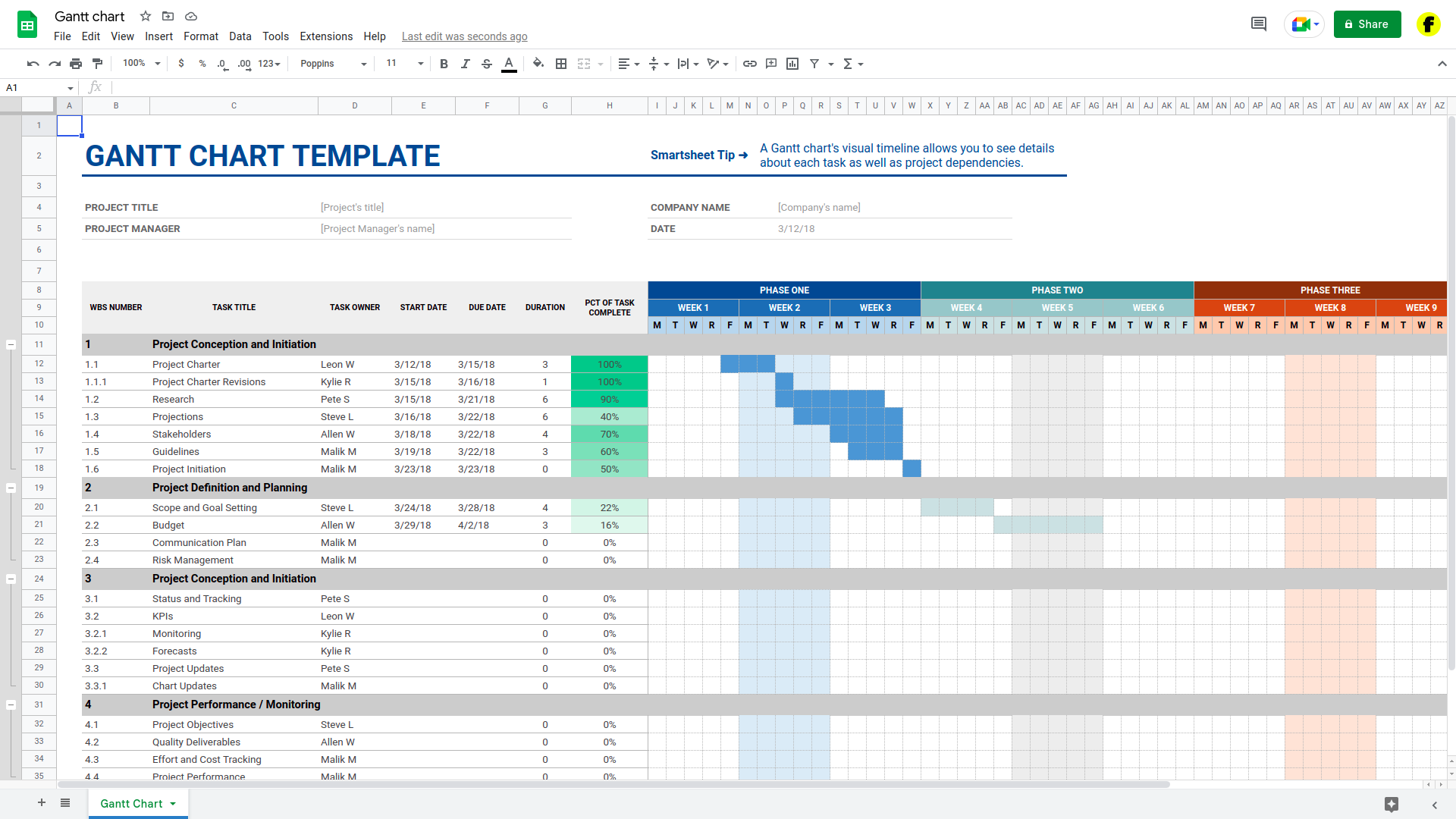How to Use Google Sheets for Project Management

Google Sheets is a versatile tool that can be used for a wide variety of purposes, including project management. With its ability to track tasks, deadlines, and progress, Google Sheets can be a useful tool for organizing and managing projects of all sizes. In this article, we’ll walk you through the steps for using Google Sheets for project management.
Step 1: Set up your sheet
The first step in using Google Sheets for project management is to set up your sheet. Start by creating a new sheet, or use an existing one that you’ve already set up.
Next, decide what data you want to track. Some common pieces of information that you might want to include are:
- Task name
- Task description
- Due date
- Status (e.g. “Not started,” “In progress,” “Complete”)
- Priority level
- Assigned team member
Create a column for each piece of data that you want to track, and give each column a descriptive title.
Step 2: Enter your data
Once you’ve set up your sheet, it’s time to enter your data. In each row, add a new task and fill in the relevant information for that task.
Step 3: Use formulas to calculate progress
Google Sheets includes a variety of formulas that you can use to calculate progress and track your project’s status. For example, you might want to use a formula to calculate the percentage of tasks that are complete.
To do this, first, create a new column called “Progress.” Then, in the first cell of the “Progress” column (B2), enter the following formula:
=IF(D2=”Complete”, 1, 0)
This formula will return a 1 if the task’s status is “Complete,” or a 0 if the status is anything else.
Next, enter the following formula in cell B3:
=B2+IF(D3=”Complete”, 1, 0)
This formula will add 1 to the previous cell’s value if the current task’s status is “Complete,” or leave the value unchanged if the status is anything else.
Copy and paste this formula down the column to calculate the progress for each task.
Finally, to calculate the overall progress of your project, enter the following formula in a cell outside of your data range (e.g. B7):
=SUM(B2:B6)/COUNTIF(D2:D6, “Complete”)
This formula will divide the total number of completed tasks by the total number of tasks, giving you a percentage of tasks that are complete.
Step 4: Use filters to view specific tasks
Google Sheets includes a powerful filtering feature that allows you to view specific tasks based on certain criteria. For example, you might want to view only the tasks that are overdue or only the tasks that are assigned to a specific team member.
To use filters, click the “Data” dropdown in the toolbar and select “Filter.” This will add a filter icon to the top of each column. Click on the icon for a column to filter your data based on that column’s values.
Step 5: Use the Explore feature
The Explore feature in Google Sheets can help you quickly and easily analyze your data and create charts and graphs. Simply click on the Explore icon (a lightbulb) in the bottom right corner of your sheet, and Explore will suggest charts and other data insights based on your data.
Conclusion
By following these steps, you can use Google Sheets to effectively manage your projects. Whether you’re working on a small personal project or a large team project, Google Sheets can help you stay organized and track your progress. With its powerful features and easy-to-use interface, Google Sheets is a great tool for project management.





